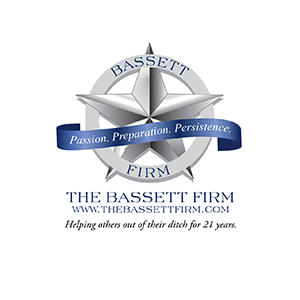In recent years, the legal landscape in Texas has been rocked by a surge in what’s been ominously termed “nuclear verdicts” – massive financial awards handed down by juries in civil litigation cases. This trend, with its potentially devastating financial implications, has sent shockwaves through industries, particularly in the realm of corporate liability in the trucking industry. One recent case from Dallas County has further underscored this alarming pattern, shedding light on the factors contributing to these staggering verdicts in Texas and across the country.
This case, as outlined in a legal alert by Lewis Brisbois, involves a stunning $105 million verdict against a trucking company. The plaintiff alleged negligence on the part of the company’s driver, resulting in catastrophic injuries.[1] Despite the trucking company’s arguments, the jury sided with the plaintiff, delivering a verdict that echoed the growing trend of exorbitant awards in Texas courts.[2] Similarly, Marathon Strategies delves into these statistics, where corporate defendants are facing “thermonuclear” verdicts in Texas.[3] These cases underscore the broader implications of such verdicts, extending beyond individual plaintiffs to impact corporate entities and their bottom lines.
With significant financial repercussions, these verdicts serve as a stark wake-up call for businesses to urgently reassess their risk management strategies and legal defenses.
The factors contributing to the rise of ‘nuclear verdicts ‘are complex and multifaceted. Texas’ legal landscape, renowned for its plaintiff-friendly environment and lack of statutory caps on damages, plays a significant role in setting the stage for substantial awards. Furthermore, evolving societal attitudes towards corporate accountability and increasing empathy towards plaintiffs may sway juries to render verdicts favoring the injured party.
Moreover, the role of litigation finance cannot be overlooked. As outlined in Marathon Strategies’ analysis, third-party financing of lawsuits has become increasingly prevalent, enabling plaintiffs to pursue costly litigation without bearing the financial risk.[4] This dynamic shift the power balance in favor of plaintiffs, creating aggressive legal strategies and driving up settlement demands.
The impact of nuclear verdicts extends beyond the courtroom, reverberating throughout industries and insurance markets. Businesses are forced to grapple with heightened exposure to litigation risk, prompting them to reevaluate their insurance coverage and risk mitigation strategies. Insurers, in turn, face mounting pressure to adapt to this changing landscape, potentially leading to increased premiums and tighter underwriting standards.
Addressing the root causes of nuclear verdicts requires a multifaceted approach. Legal reforms, such as implementing statutory caps on damages and promoting alternative dispute resolution mechanisms, may help temper the inflation of jury awards. Additionally, businesses must prioritize proactive risk management, investing in comprehensive safety protocols, driver training programs, and surveillance technology to mitigate the risk of accidents and subsequent litigation.
Furthermore, transparency and accountability within the legal system are essential. Greater scrutiny of jury selection processes and ensuring access to impartial judges can foster trust in the judiciary and mitigate perceptions of bias. Moreover, educating jurors on the complexities of liability and the potential consequences of excessive verdicts may promote more equitable outcomes.
To avoid high verdicts from runaway jurors, one approach is to attempt to settle these cases before they reach that stage. An article entitled “Nuclear Deterrence” discusses the importance of preparing for mediation with the same level of strategy as for trial, despite the high percentage of cases that settle before trial. It emphasizes the need for effective communication, trust-building, and strategic planning among insurers, counsel, and the insured. It highlights the use of “Nuclear Verdicts Defense Methods” outlined in Robert Tyson’s book, emphasizing their application not just at trial but also during mediation to persuade plaintiffs and mediators toward a reasonable resolution.[5] Key strategies include accepting responsibility, personalizing the corporate defendant, suggesting a settlement amount, and addressing pain and suffering.[6] These methods aim to defuse anger and establish credibility with the mediator and plaintiff, ultimately paving the way for a reasonable resolution.
In conclusion, the prevalence of nuclear verdicts in Texas underscores the need for stakeholders across industries to heed the warning signs and adapt to this new reality. By understanding the underlying factors driving these verdicts and implementing proactive measures to manage litigation risk, businesses can navigate the legal landscape with greater resilience and safeguard their long-term viability.
[1] “Legal Alerts.” Dallas County Courts Continue Trend of Nuclear Verdicts with $105 Million Award Against Trucking Company Delivering for Amazon – Lewis Brisbois Bisgaard & Smith LLP, lewisbrisbois.com/newsroom/legal-alerts/dallas-county-courts-continue-trend-of-nuclear-verdicts-with-105-million.
[2] Id.
[3] “Albany 2021 New Faces.” Marathon Strategies, 16 Mar. 2023, marathonstrategies.com/corporate-verdicts-go-thermonuclear-texas/.
[4] Id.
[5] Akre , Jennifer. “Nuclear Deterrence .” CLM Magazine , no. March 2024, p. 28.
[6] Id. at 31.

